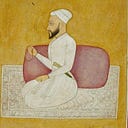A little while ago I discussed South Asian genetics and where Pashtuns fall on that spectrum. I think the conclusions, while broadly correct, were lacking a bit in detail. In a sense this is inevitable, as there isn’t a great data set I’ve found for Afghan Pashtuns that specifies both tribe and location, while being free of excess Turkic admixture.
That said I decided to do another PCA. This time I have two sets of Pashtun samples. One being Afghan Pashtuns from Kandahar, the other being Pakistani Pashtuns from Kurram. Based on the data I have it appears that location is a stronger predictor of where Pashtuns cluster genetically than tribe, so I went with that grouping. I also removed some non-Pashtun samples that seemed to just clutter the chart, while adding Punjabi Kamboj samples. See here for additional methodology details.
First thing to note is that Punjabi Kamboja’s are very similar to Kurram Pashtuns. My Swat Pashtun samples, though not pictured, cluster right with the Kurram-Kamboj group. The Kandahar Pashtuns form their own unique cluster, and while generally quite distant from Iranians, are somewhat close to the lone Bandari-Iranian sample.
So seems like a clear genetic gap between Pakistani and Afghan Pashtuns right? Wrong! I didn’t bother plotting it because its only one sample, but an individual from Waziristan (Pak) clustered right with the Kandahar Pashtuns. Meanwhile, individuals (only one each) from Kabul and Laghman (Afg) clustered with the Kurram Pashtuns. And finally, an individual from Paktia (Afg) also clustered with the Kandahar Pashtuns. That was a lot of words so I’ll try and convey it all with a map.
Pink denotes those Pashtun areas that cluster closer to the Kurram-Kamboj group. Yellow for the Pashtun areas that cluster closer to the Kandahar group. So the Pashtun genetic divide is best appreciated not as a Afghan-Pakistan division, but a North-South division. Pashtuns near the Indus lowlands and Khyber Pass exhibit significant overlap with Punjabi/Dardic groups.
Ultimately however, there is likely not a stark difference between the pink and yellow groups. More sampling would reveal these populations bleed into each other at the margins, forming a natural continuum.
That’s probably it for the Pashtun-themed genetic posts, at least for now. I’ll repeat my disclaimer that genetics do not equate to culture or ethnicity, they are just a piece of the puzzle.
